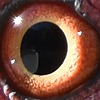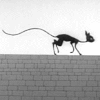HOME | DD
 TheBootesArtVoid — Water Dragon ..In The Water (Wild)
TheBootesArtVoid — Water Dragon ..In The Water (Wild)

#animal #animalphotography #animals #dragon #dragons #lizard #lizards #natural #nature #naturephotography #photo #photography #photographyanimals #photographynature #photographyphoto #photos #wildlife #wildlifephotography #wildlifereferencephoto #thebootesartvoid
Published: 2023-11-04 04:34:27 +0000 UTC; Views: 1277; Favourites: 83; Downloads: 0
Redirect to original
Description
Species Name: Australian Water Dragon
Species Latin Name: Intellagama lesueurii
Native To: Eastern Australia from the state of Victoria to Queensland
Conservation Status: Least Concern
Photo Taken At: Melbourne Zoo
Size (length): 80-90cm (31.5 – 35.4 inches)
Weight: 1kg (2.2 pounds)
Top Speed: 20kmh (12.4mph)
Lifespan: 20 Years
Population Trend: Stable
Diet: Omnivore, insectivore, folivore, frugivore, carnivore
Lifestyle: Arboreal, semiaquatic, precocial, burrowing, terrestrial, oviparous, territorial
Group Name: Lounge
Baby Name: Hatchlings, juveniles
Reproductive Season: Spring
Eggs Per Clutch: 6-18 Eggs
Independent Age: At Birth
Age of Sexual Maturity:
Sub Species:
Eastern Water Dragon (Intellagama lesueurii lesueurii)
Gippsland Water Dragon (Intellagama lesueurii howittii)
Description:
Australian Water Dragons are can grow up to a maximum of 1 meter (3.3 feet) in length. Their bodies will be covered in rough scales that will generally be coloured a gray-brown colour, they will sometimes have some red colouration on their stomach and chest. Some individuals may also have a black band featured running from their eyes. They will have a crest of spines that run along their back from the head getting smaller as they run towards the tail. They have long powerful limbs and claws which help them to climb, they also have a long tail which is helps aid them with swimming. The males will generally be larger than the females and they will generally have larger heads. The colouration of the juveniles will be less distinct but will become more prominent as they mature.
Diet:
What these animals feed on depend mostly on their size, it seems that they will generally feed on things that can fit in their mouths as well as their stomachs. Juveniles will tend to feed on things like small insects such as ants, crickets, spiders, worms, and caterpillars. As they mature the size of what they can eat will grow in size as well including small rodents (mostly baby mice), frogs, and other small reptiles. They are not exclusively carnivorous as they will occasionally also feed from trees, vegetation, fruits, flowers, and various herbs. That said even when they do mature small insects still play a major role in their diet.
Behaviour:
Purely wild specimens of the Australian Water Dragon are quite shy and quick to run from danger. They are quick runners and will generally hide in thick vegetation or they will dive head first into a nearby body of water to hide. They are excellent swimmers as their long flat tail helps propel them to the bottom of the water where they can hide for up to 90 minutes to avoid detection. That said they have adapted in the continual presence of humans, they will be a lot more comfortable around humans although still a little wary or territorial. They can be found in various suburban parks and gardens, particularly ones that have a small pond or other body of water.
These lizards will form social groups that generally consist of several females, juveniles and a single dominant male. The males will be territorial more so in areas of higher population density. They can be active both during the day as well as during the night, they are often seen basking in the morning nearby riverbanks or rocks. They can also been seen resting in trees, swimming, or foraging for food. Australian Water Dragons that live in cooler regions of Australia will go into a hibernation like state during the cooler months, they will seek shelter in a burrow, between boulders, near logs or riverbanks to wait out the colder weather.
In order to communicate with each other they use a variety of dominant and submissive movements including licking, arm-waving, and head-bobbing. Fast arm-waving signals dominance where as slow arm-waving signals submission. The males as mentioned before will be quite aggressive and territorial to other males, they will resort to the previous mentioned posturing as well as chasing away and even fighting rival males.
Not much is known about the mating behaviour of these animals, they will generally mate during the spring especially during the month of October. The female will create a burrow about 10 - 15cm (3.9 – 5.9 inches) deep in order to lay her clutch of 6-18 eggs. The nest will usually be in soft or sandy soil in an area that is open to the sun to keep them warm. Once the eggs have been laid the mother will fill the chamber back up with soil and scatter loose debris over it, the gender of the hatchlings is dependent on the temperature of the nesting site. When the hatchlings come out of their eggs they will tend to stay around the nesting burrow for some time, when they do eventually move away from the nest they will tend to stay within their group of hatchlings away from the adult population for some time.
Threats:
Currently this species is not at risk of becoming extinct and they are currently listed as a species of least concern. That said they are subject to predation to a variety of different animals, the adults can be eaten by carnivorous birds, snakes, cats, dogs, as well as foxes. The juveniles are also quite vulnerable to predation particularly to Kookaburras (Dacelo), Currawongs (Strepera), Butcherbirds (Cracticus), and other carnivorous birds. These animals are also prone to being killed by cars as they tend to bask in the sun on the bitumen and concrete where it is warm.
Even in settings where these animals have been tamed it is not recommended to actively handle them if possible. These lizards can get rather territorial and may bite in retaliation if you are not careful. Although they do have a venomous bite their venom isn't really a threat to humans, their venom is more suited for their prey which are generally much smaller in size. That said their bites can pack quite a punch, they have sharp teeth and will bite down hard enough to draw blood.
Further Reading (general information):
Wikipedia: en.wikipedia.org/wiki/Australi…
Kidadl: kidadl.com/animal-facts/easter…
Animalia: animalia.bio/australian-water-…
Australian Museum: australian.museum/learn/animal…
Backyard Buddies: backyardbuddies.org.au/backyar…
Related content
Comments: 8

👍: 1 ⏩: 1

👍: 0 ⏩: 0

👍: 1 ⏩: 1

👍: 0 ⏩: 0

👍: 1 ⏩: 1

👍: 0 ⏩: 0

👍: 1 ⏩: 1

👍: 1 ⏩: 0

























